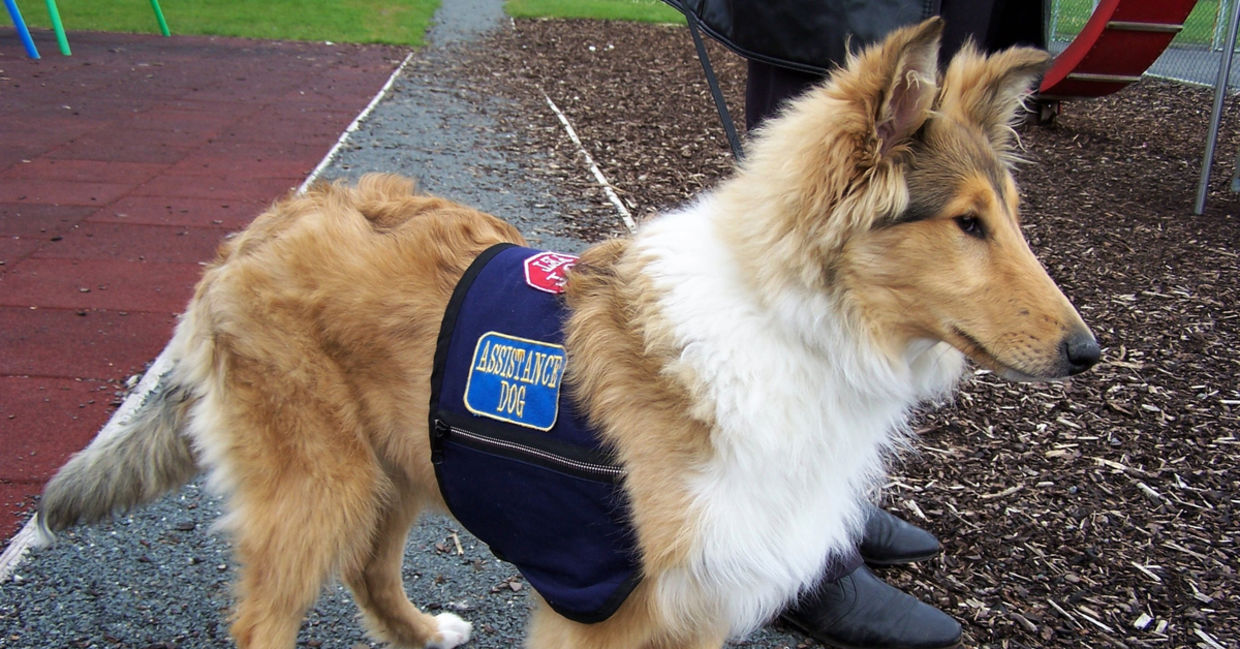
(Susilyn / Shutterstock.com)
There has been much interest in service animals since Sully, the service dog of former US President George H.W. Bush, became a hit on social media for his loyalty to his former charge and as he transitioned into a service dog for wounded service members.
The former president needed daily help after the death of his wife Barbara and Sully assisted him by opening doors and bringing him needed items or going to get help when needed. Sully also provided comfort and company for the ailing former president. Sully was really a working dog.
All service animals – currently only dogs and miniature horses can have that official designation in the United States – are working animals. Most people know about guide dogs, but they are only one type of service animal. In fact, there are service animals trained to help people with all kinds of disabilities from aiding deaf people, protecting a person having a seizure, to calming people who live with PTSD.
Service animals have saved many of their charges from seizures and potentially dangerous sugar levels. In 2006, a beagle named Belle was able to bite 911 into her owner Kevin Weaver's cell phone after he had a diabetic seizure. Belle was trained to detect abnormalities in a person's blood sugar levels. Weaver credits Belle for saving his life.
There are many more stories of service animals who saved their owners – that is their job after all – including guide dogs who led their charges out of the smoky World Trade Center towers on 9/11.
"Service animals perform some of the functions and tasks that individuals with a disability cannot perform for him or herself," according to the Americans with Disabilities Act (ADA). In the US, it can be a physical or medical impairment. Some of these disabilities are invisible.
Why invisible? You can clearly define a person in a wheelchair or using a cane as disabled, but you cannot see epilepsy unless the person is actively seizing. Other conditions like chronic pain, dizziness, vision impairments or mental health disorders also remain hidden from most people, according to the Invisible Disabilities Association (IDA). These peoples' disabilities may not be visible, but they still require the aid of a service animal.
When the ADA of 1990 passed, there was no set definition of which animals could be used, and people had service dogs, pigs, monkeys, and miniature horses working for them. In September 2010 the laws were clarified, and the law now covers only dogs and, in some cases, mini horses. People can still have other animal species like cats as therapy or comfort animals, but that is a different designation and one that is not protected under the law.
How can you recognize a service animal? Some, like guide dogs, are easily recognizable. Others may wear a special harness or vest, like Sully, but that is not required. Sometimes you just can't tell. Service animals are by law allowed access to public places, transportation, and private places like taxis, restaurants, and hotels. The Fair Housing Act does not allow apartment owners to discriminate against people who use service animals.
Service dogs require a tremendous amount of training before they are placed with their charges. The average investment for a service dog, according to the IDA, is $25,000 plus around $2,500 a year for their care. Fortunately, many nonprofit organizations and businesses will give grants (or provide service animals) to disabled people who need help. Everyone deserves a helping hand or paw.
YOU MIGHT ALSO LIKE:
George H. W. Bush’s Former Service Dog Sully Has Joined the Navy
7 Health Benefits of Living with Pets
How Chicken Therapy Can Tackle Loneliness Among the Elderly







